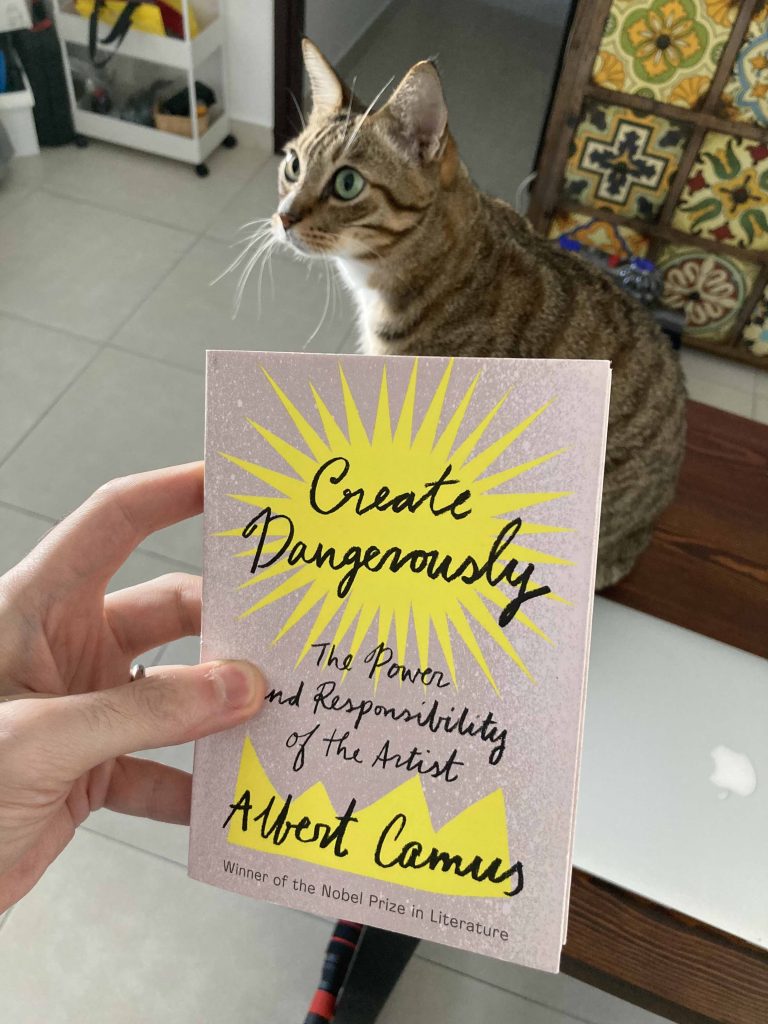Having to spend some time in a waiting room yesterday evening, I was happy to remember a small book in my back pocket. The book is a speech by Albert Camus, titled Create Dangerously: The Power and Responsibility of the Artist. The English translation is done Sandra Smith.

This is one of those short books that took me a long time to finish. It’s only 46 pages long. But it’s full of ups and downs and there is no clear message that could be summarized in a couple of sentences–and that signifies an essential feature of the book. We cannot write about true dangers in the style of an instruction manual. Writing about true dangers must leave some of the task to the reader and this explains the absence of a clear message. But the book is important and in my opinion extremely useful for people who are concerned with creativity and communication. As I was reading the book, I was also thinking about my YouTube project. I was thinking about other content creators, whom I have recently discovered and with whom I feel a strange sense of affinity. For my own project, this book is useful in illuminating very important dangers and flaws that I might unknowingly settle into. It warns against getting comfortable.
Freedom in art is worth very little when it has no meaning other than assuring that the artist has an easy life (p. 43).
Camus identifies two dangers (traps) in any creative enterprise: The first danger is frivolity. The second danger is propaganda/ideology. Frivolity is the trap we fall into when we use, “art for its own sake,” as an excuse for being irresponsible. Our creativity becomes frivolous when we are not in touch with any societal pulse, when we don’t let the care and love for others fuel our project.
On the other hand, propaganda is the trap we fall into when our concerns with the social-political effect of our projects suffocate the concerns about form and style. We neglect the importance of means (which must be appropriate to the ends). Art becomes a subservient instrument, which is to say it ceases to be free.
The two dangers (traps) correspond to two sources of guidance, which we must use with cautious. (We must use the signposts without crashing into them.) Art is guided both by what is and what should be the case, both by the desire for freedom and by the desire for commitment, but it shouldn’t be captured entirely by one of these poles. In my own case, I believe I should be guided more by responsibility. In my case, I believe I should let myself be affected more but what goes on in/around us, the pulse of the world. I should connect more with other people and move away from a frivolous freedom. Does that mean risking the possibility of becoming a propaganda machine?
Art develops between two chasms: frivolity and propaganda. Along the high ridge where great artists keep moving forward, every step is dangerous, extremely risky. Yet it is within that risk, and only there, that true artistic freedom lies (p. 38).